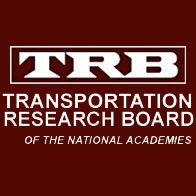22 September 2015 | Istanbul, Turkey
On 15 September 2015, the AFB20 (2) Roadside Safety Sub-committee on International Research Activities held its third European workshop in Istanbul, Turkey. Organised by ERF and the Technical University of Istanbul under the auspices of the TRB, the event lived up to the high expectations of previous years and gathered approximately 100 experts from all over Europe.
The morning session was dedicated to explore challenges currently facing the hEN 1317-5 and identify tangible solutions. While there is an overwhelming consensus of the technical benefits of the EN 1317, its incorporation in the provisions of the Construction Products Regulation has led to certain implementation issues that need addressing. To address these challenges, the AFB 20(2) Roadside Safety Subcommittee on International research Activities held a strategic session with the participation of road authorities, manufacturers and the European Commission.
The first sessions debated three major items: certification and market surveillance, additional requirements by certain road authorities when procuring vehicle restraint systems and the issue of re-testing and rectifying systems linked to the update of the hEN 1317-5.
Concerning certification issues, lack of clarity within the standard has led to cases of incorrect certifications that are creating situations of unfair market competition and putting road users potentially at risk. In this respect, participants agreed on a dual course of action, i.e. strengthening the hEN 1317-5 in order to provide further guidance for certification bodies to reduce scope for error and at the same time, strengthen market surveillance by improving cooperation between the market surveillance authorities, notified bodies and the industry. On the latter point, work has already begun on a market surveillance checklist that is to be jointly elaborated by all concerned parties and will be made available to relevant authorities in the 1st half of 2016.
With respect to requirements placed by road authorities for the marketing of products, it was noted that different authorities interpret the provisions of the harmonised standard differently. CE marking for road restraint systems should in principle allow companies to market their products freely across Europe, however, several countries argue for the need of additional criteria to ensure maintenance and safety. While it is clear that road authorities cannot ask for additional performance criteria when procuring systems (Court Case C-100/13), there is a still a grey zone with respect to what authorities can further require in order to optimise their maintenance needs without limiting competition. Given that manufacturers are invested significantly in the development of new products with the perspective of an open European market, it is imperative to arrive at a common ground between the supply (the industry) and the demand (the road authorities).
Last but not least, with respect to the need for re-testing products following the updates of the new standards, it was made clear that, from a market perspective, it is not possible for companies to have to re-test all products with the revision of each standard due to high testing costs. Given that this is not an issue that can solved in the standard, it was agreed that the industry should take the lead in developing a compromise proposal that will subsequently be put to consultation to interested parties.
The afternoon of the event focussed mainly on technical developments in the field of vehicle restraint systems. Amongst others, the sessions focussed on the following items:
– The status of implementation of EN 1317 in Turkey and passive safety support structures (EN 12767) in Europe. Since 2011, Turkey has adopted the CE marking regime which means that all systems placed in Turkey must be certified according to the European rule. Given that Turkey is a dynamic country which is currently expanding its road infrastructure, it is important for authorities to make the use of the latest market development to optimise cost and reduce the consequences of accidents. With respect to break away poles, it is a powerful road safety tool for road authorities which is not being sufficiently used and such, more action is needed to ensure better awareness and uptake of these solutions.
– Selection of vehicle restraint systems on Europe’s: while Europe has common performance standards for safety barriers, its selection criteria differ largely. As such, the SAVeRS project has sought to establish a common methodology for selecting VRS in Europe.
– Status of in-situ barriers in Europe: while the pre-cast and steel barrier sector has seen significant development in recent, in-situ concrete barriers have long been based on a generic designs dating back to more 20 years. However, in recent years, new developments have taken place that have allowed in-situ concrete barriers to achieve better performance in terms of ASI and better durability in terms materials and corrosion resistance. The introduction of the CE marking for in-situ barriers should accelerate innovation in the sector but this means that further guidelines should be developed in the standard to guide notified bodies on certification.
– Developments in terminals: while significant progress has been made in the field of vehicle restraint systems, terminals remain an area where significant scope for improvement exists. Recent development in the area of energy absorbing terminals point to the direction of strengthening the relevant provision of the European standard in order to eliminate loopholes and guarantee that terminals tested on the road do not present a hazard to users.
Find the agenda of the meeting here
For more information, please contact Mr. Konstandinos Diamandouros.
-
Safer, Smarter Roads Discussed at the 25th Belgian Road Congress
October 10, 2025 -
ERF calls for Smarter, Safer Road Work Zones at Bologna Forum
October 9, 2025

